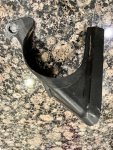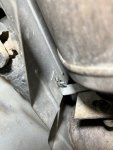I totally agree with everything you said. The reason I am asking all these questions is to not do exactly what you described, creating additional issues where there may be none, or something minor, besides throwing money out the window

The idea behind the defective turbo is that the compressed air, leaks into the oil supply, which someone on the forum tested it with water and indeed water was coming thru the oil input side in his case and i am asking all these turbo questions to understand how it works in more detail in order to troubleshoot this particular case.
Just like on my other REV truck, where indeed I was totally green and had this difficult start-up issues, some said that I need a new IP, but for such intensive job I needed some additional proof that indeed that was the real issue. So I fixed the basics first and it turns the real issue was that I had several cracked fuel lines on both, return and input sides, and on the input side I was getting air in the system, which also was making the engine RPMs to go up and down on its own, just sitting there.
I appreciate your input and everyone's else very much! And to tell you the truth, many times I think if our government would only be half as effective as our forum, things would run a lot better





